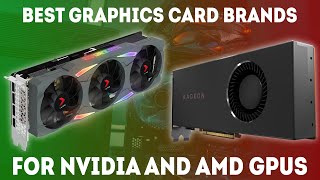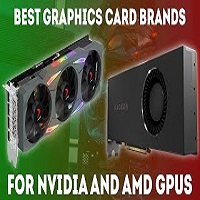You hardly expect it – but the same graphics card can provide completely different performance from different manufacturers.
.Are you building a gaming PC? Are you upgrading an ageing carrot for the latest games? Sooner or later you will come to the point where you have to decide on a new graphics card. The choice is large, and the prices fluctuate between affordable and utopian. Keeping an overview is difficult. When you have made it clear which model meets your requirements, it has usually already been some time.
After all, you don’t have to worry too much about the manufacturer, as it is known that only the two top dogs AMD and Nvidia are available there, right? Far from it: Although the two hardware giants supply the chip technology, it is very often found in graphics cards from completely different companies. Suddenly names like Asus, Gigabyte, MSI or Zotac appear and things get confusing. Our Site brings light into the darkness and reveals, using Nvidia as an example, what is important when choosing a manufacturer.

Graphics cards: maximum performance
Perhaps the most important aspect when buying a graphics card is performance. After all, it should fulfil a specific purpose, such as handling current games with the best picture quality. Depending on the manufacturer, there are fluctuations in performance. The basic components of the card are initially the same for each model: For example, for the Nvidia Geforce RTX 2060 Super
regardless of the manufacturer, the same TU106 graphics chip (“TU” refers to Nvidia’s Turing Refresh generation) with 2,176 shader cores and 8 gigabytes (GB) of graphics memory. The actual performance of the card results from the interaction of these components, the additional equipment (better cooling allows manufacturers to use higher clock rates for their chips, which improves the performance accordingly) and, last but not least, the clock rate of the graphics processor (GPU ).
The manufacturers tweak it in their own way and achieve different boost frequencies. The GeForce RTX 2060 Super Dual from Palit (359 euros) clocks with 1,470 megahertz (MHz) in the basic clock and with 1,650 MHz in the boost. A counterpart from the manufacturer Gainward (384 euros) runs in the same basic cycle but boosts to 1,710 MHz. Sometimes a manufacturer also offers different versions of a graphics card: The Palit Geforce RTX 2060 Super Gaming Pro OC (378 euros) also achieves a boost to 1,710 MHz.
Graphics card manufacturer: the equipment
The manufacturers don’t just pay for screwing the GPU clock, the features of the graphics cards also vary. The simplest example of this is probably the cooling: The Nvidia Geforce RTX 2080
comes from the manufacturer Asus in a version with two active fans (699 euros) and a counterpart with three active fans (794 euros). The manufacturer EVGA even offers a model with water cooling (774 euros). A graphics card with better cooling is not only more powerful, it often also runs more smoothly. Fewer or lower quality fans tend to spin up during full load and are annoying with an audible noise. But that’s not all: The built-in materials, the housing or the connections of the graphics card are different and have an impact on the performance. It’s a bit like buying a car in the past: air conditioning costs extra is not absolutely necessary for driving but makes the journey more pleasant.
Graphics cards: supply and demand
It is not the manufacturers alone who set the price for a graphics card; the sinfully expensive image machines are also subject to the laws of the free market economy. For the Bitcoin boom in 2017, the card stocks of manufacturers and traders were just about, because the so-called Mining
uses the cryptocurrency GPUs. The prices for graphics cards were suddenly correspondingly high. When the new Nvidia Geforce RTX 3080 recently shook up the market because it beat its predecessor top model by twice the performance at half the price, it was sold out within a few hours
. The price rose promptly from the 699 euros originally estimated by Nvidia itself on eBay and other marketplaces to over 1,000 euros. So it is often important to observe the market and recognize price fluctuations. If, for example, a new performance miracle is in the starting blocks, the price for older models usually falls.


